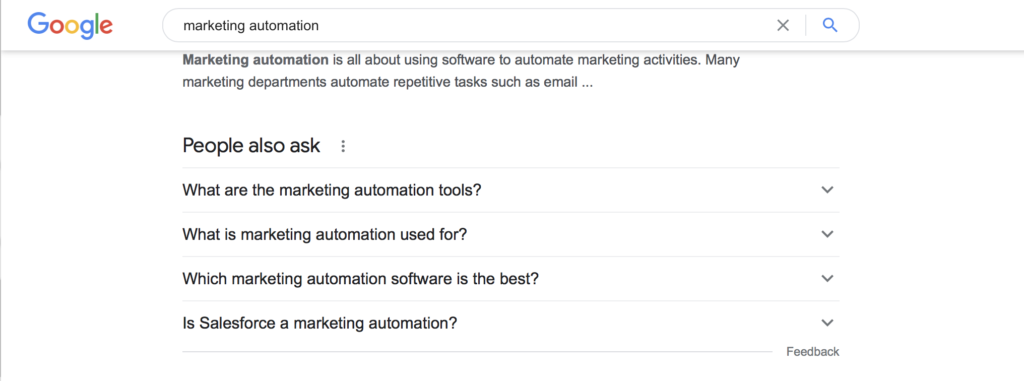Top 10 Ways to Curate Strong Content – Lessons Learned from The Digital Summit at Home.
Last updated: October 13, 2024

Over the last few years, the Omeda team has attended the Digital Summit Live in Chicago. This past February we attended the content focused virtual event. Below are some high level insights for curating the best content and activating your audience:
1. Less is More. Be Impactful in One Channel and Then Expand.
Joe Pulizzi of Content Marketing Institute began his keynote speech by driving this point home. He said, “The best media companies in the world excel at one platform and then they diversify.” Then for supporting examples, he mentioned the New York Times, TED, Huffington Post. These companies all started by doing one thing really well. Next, they built a viable audience and last they diversified. He stressed that even if companies have the budget to be everywhere at once that’s a poor choice because they won’t be able to perform well in all categories. It would be best to focus in and excel in one area first, grow that audience and then expand to places where the audience wants to hear from you. Sometimes, companies think that they have to be everywhere even when the audience isn’t interested in being met in numerous places.
2. Trust and Brand Affinity Are Key.
While trust is always an important part of the purchasing process, it is particularly crucial in 2021. We are going through a global pandemic. Your prospects are looking for a partner that they can trust. This point came up a few times during the Digital Summit. However, Ann Handley of MarketingProfs made a strong point when she said, “As marketers our idea is to break through the clutter. Grab attention. We want to do that constantly. However, it might be the wrong place to start. It’s not about can I grab?, can I break through?…. Instead, it should be about how can I earn your trust? This is what your customers and prospects are thinking about when they look at what you produce. Can they trust you with their business and loyalty and do they like you?…Do I like them – matters a whole lot in the B2B space.”
Streamline your tech stack: Boost efficiency, unify data & retain talent! Get expert tips now
3. Speak to Your Audience in a Meaningful 1:1 Way.
In establishing a relationship with your audience – whether in a newsletter or a blog – it’s important to talk in an impactful way by avoiding passive voice. Instead use words such as “I’s” and “we’s.” In doing this, you are humanizing your audience. A few presenters made this recommendation but it all ties back nicely to the second point above – establishing trust and brand affinity.
4. When Working Towards Content, Take Advantage of Google’s “People Also Ask.”
Besides looking at your own analytics or trends, you can type into Google search a few words around your industry or product. After you hit search, browse down the page until you get to the section that says, “People Also Ask.” I am including a screen grab below which shows my recent search on marketing automation. You will see that different topics came up. The section is located here because when people search broadly on Google, they need to find articles that will benefit them. You can glean great ideas from this section because it lists categories your audience is also showing interest in. This is a way of seeing what people’s intent was when they entered a google search.

5. Blogging is Valuable for Multiple Reasons. (This point made us so excited, we had to blog about it!)
Blogging drives traffic to your website, it can establish you as a thought leader, it boosts credibility with your customers, and it’s essentially a FAQ section where you can educate and sell to prospects. JJ Abbot, Founder and Director of Premier Creative took us through these reasons of why to invest in your blog. He also added some strong reminders inclusive of: not talking about your product until the very end, including a search bar, including images, starting with a hook, and strong CTA and contact information in the footer. JJ stated, “The better the quality and more informational: the better chance you have for the blog to rank. Don’t write anything less than 500 words. 700-1000 is ideal.
6. Two Million Websites Will Go Live Today, and it’s Compounding.
Soon we will be at 5M and 10M a day. The pace of technology is rapid and noteworthy. There are so many competitors. This point drove home the need to differentiate yourself. It reminds everyone that they need to deliver value and engage their audience in a meaningful and timely way.
7. Utilize Social Media but Don’t Lose Sight of the Saying: Don’t Build Your Content House on Rented Land.
The point above was made by Joe Pulizzi of Content Marketing Institute as well as by Ann Handley of MarketingProfs. Both reiterated the importance of owning your first-party data and cultivating that on a platform that you manage. They aren’t advising you avoid social. However, both stressed that an algorithm or some rule could change and your audience could be lost.
8. “Your Newsletter is Your MVP & OG”
Ann Handley of MarketingProfs mainly spoke about the importance of Newsletters and tone. She contributed the point above. After highlighting the need for establishing trust during these times, she linked that to one of the most reliable and best places to establish that: your Newsletter. She spoke about a published study with Content Marketing Institute that looks at the top five ways to drive revenue over the last 12 years. Newsletters were in the top five each year are still ranking in the top five in 2021. Other items have cycled in and out, but Newsletters remain in the top five.
9. Be Consistent & Start Strong.
Whether it’s your newsletter, podcast, webinar, or blog cadence, be as consistent as possible. This point was covered by at least four of the speakers. The timing and delivery of the content should remain as consistent as possible.
Similarly to the above statement – no matter the medium – start strong! Ask yourself if you would read or view past the opening? If the answer is no, then rework your opening hook. This came up during many of the presentations and is a good reminder for content creators.
10. Listen to Your Audience & Look for the Human Connection.
One of the most impactful presentations was called “Creativity in Today’s Digital First World,” given by McLean Donnelly who had worked as the VP of UX at Shutterstock. He described how Shutterstock began a conversation with its users to identify their needs. They wound up identifying a business segment that had the need for stock photography but also wanted to be able to create some basic edits to these images. The group they identified didn’t have the means to do this and said, ’I just want to bring a little creativity to my work.’ The segment was small businesses. Through wire framing and researching, Shutterstock came up with “editor” for small businesses and differentiated themselves from other free stock photo sites.
Shutterstock also opened usability labs to have real customers come in for weeks. In doing this, they were able to identify needs and understand the voice of the customer. McLean pointed out that sometimes companies get so big that they simply look at their google analytics instead of focusing on the human connections. Empathy is a key piece to establishing relationships with your audience and growing revenue.
Subscribe to our newsletter
Sign up to get our latest articles sent directly to your inbox.